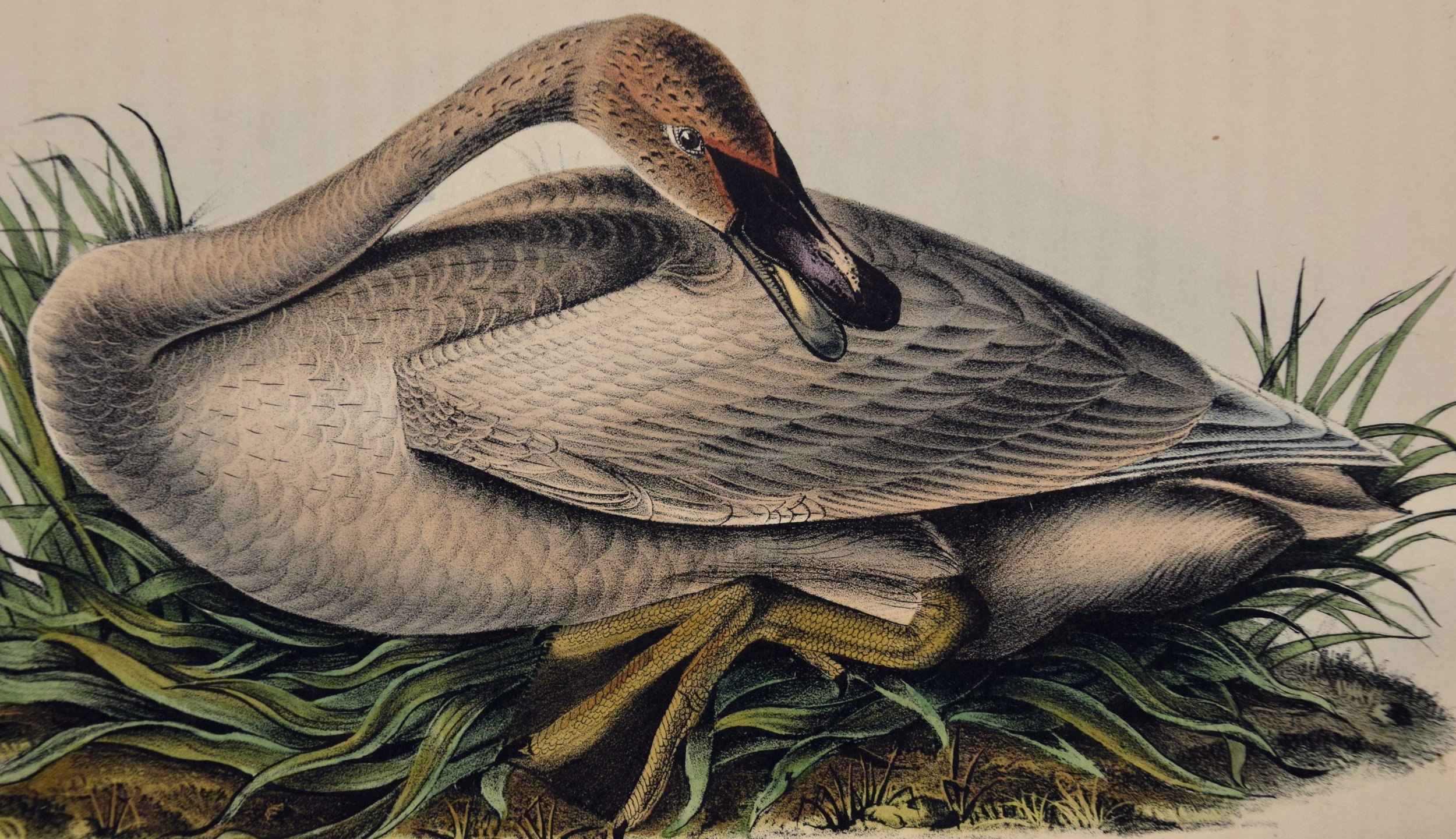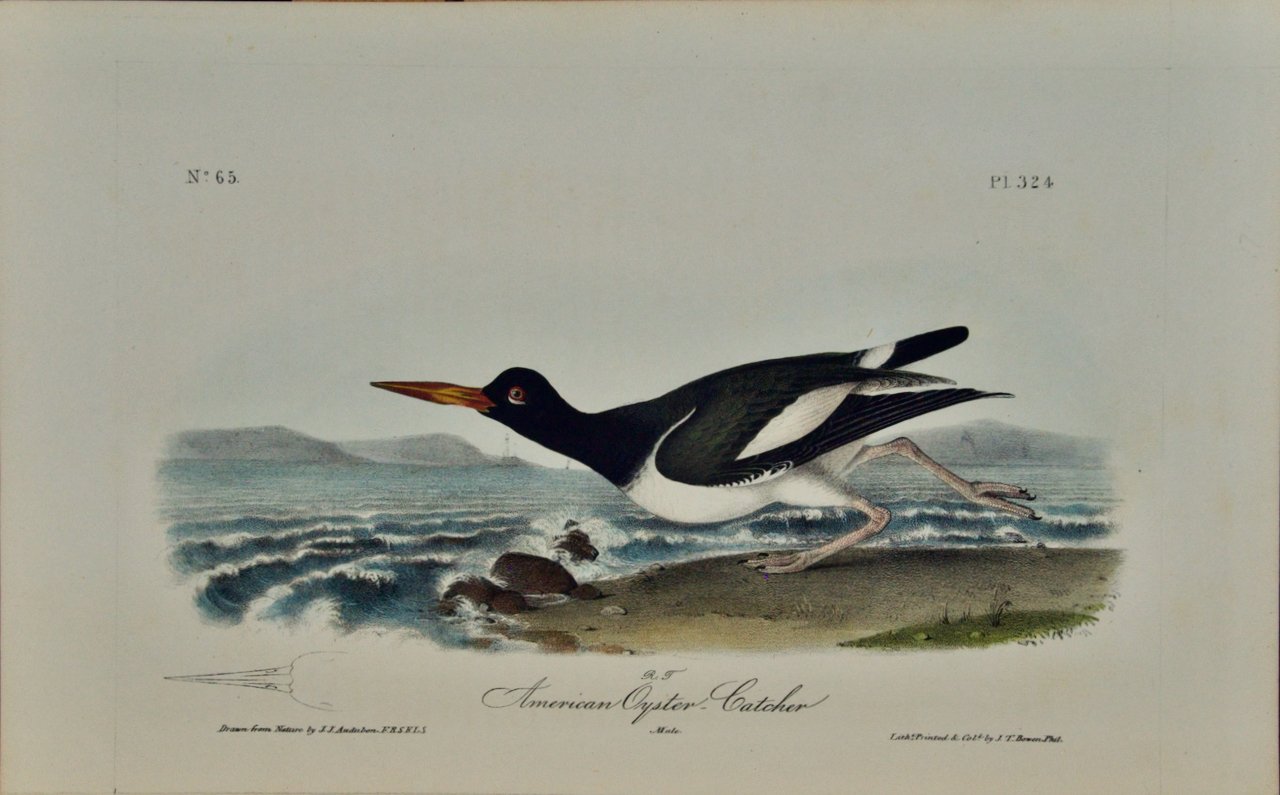This beautiful hand-colored wood-cut engraving on chain-linked laid paper depicts a Crowned Heron bird standing on land adjacent to a body of water with a flowering plant rising above the surface of the water. There is Latin text on the verso. The sheet measures 14" x 9.25". There is ghosting of the text from the verso, but it is otherwise in excellent condition. It is rare to find individual engravings from Aldrovandi's work for sale. A set of the 13 volumes is currently available for over $312,000.
Ulisse Aldrovandi (1522-1605) was an Italian botanist, pharmacologist, and noted author. He was a genuine "Renaissance Man". He studied mathematics, Latin, law, and philosophy, eventually earning a degree in medicine in 1553. In 1549 he was arrested in Bologna for heresy and sent to Rome where he managed to exonerate himself, likely due to his parents' nobility. Aldrovandi was a dedicated collector of biological and other natural history specimens. He developed a system of classification for his specimens which contributed to subsequent systems of animal taxonomy. In this words, he described his scientific endeavors; ‘And with all this I have kept three scribes in my house, excellent painters, designers, engravers, and have spent much on transportation [of artifacts] and on a library that can stand up to any other particular library in Italy.’ His personal natural history collection is now on display at the University in Bologna, where he was a full professor. He founded The University of Bologna Botanical Gardens, one of the oldest in Italy. He was also appointed the inspector of drugs and pharmacies by Pope Gregory XIII. The Pope became a benefactor, supporting Aldrovandi's natural history work.


























